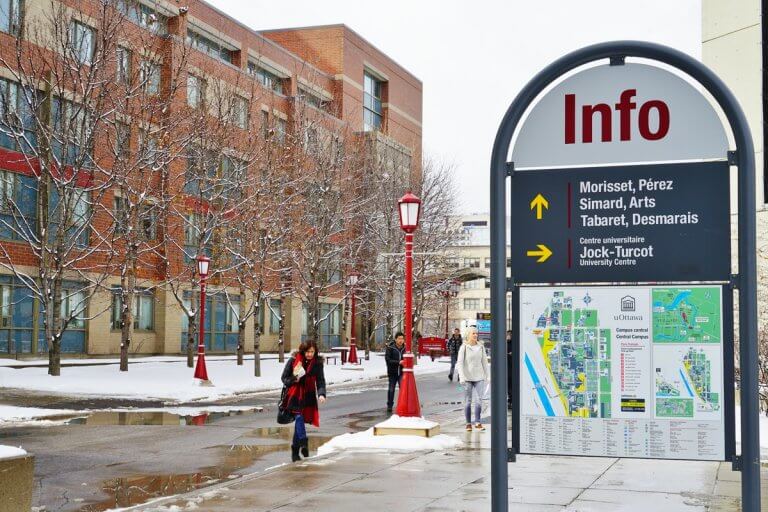
The second largest country in the world, Canada is a wildly popular destination for international students. As one of the world leaders in higher education, Canada offers students a range of opportunity and experiences.
With beautiful ski slopes in the province of British Columbia, bustling cities of Quebec, Vancouver, Toronto, and Montreal, stunning prairies in the province of Manitoba, impressive mountain ranges and laid-back, friendly locals all over, Canada really does have it all.
It’s not surprising you want to study there, but when you have absolutely no idea where to start, it might feel like an unreachable goal.
And because every university – and even each individual program – has its own rules and requirements, things can seem even more tricky.
So here it is, the whole process broken down into manageable steps.
You can access it in the form of our printable PDF step-by-step guide here.
1. Ensure you meet all requirements
Applying to university in Canada as an international student does not happen overnight so make sure you start planning at least a year in advance. Have a look at the requirements for various courses and see what documents you need for each one.
Bear in mind what you need for universities in one province may be totally different to what you need in another.
For all universities, however, you are likely to need:
- An up-to-date passport
- An English and/or French language proficiency qualification
- Proof of how you will be funding your studies
2. Find a course and select your universities
You will choose and apply for a specific major when applying for university in Canada but unlike the UK, this tends to be more flexible if you change your mind.
You must make sure you apply to an institution that is on the designated learning institutes (DLI) list in order to obtain a student visa and be certain you want to study at the universities you select as there are separate fees for every program and university you apply to.

You can almost smell the fresh air looking at this gif. Source: GIPHY.
3. Take English/French exam
IELTS is likely to be your best bet for an English language proficiency test as all universities and colleges in Canada accept it. You could also take the Cambridge English: Advanced or TOEFL examinations.
If you are hoping to study in a French-speaking part of Canada, you are likely to need a French proficiency test. The most common is the TEF exam but you could also take DALF, DELF, or TCF.
Fees for each range from around CA$100 upwards so be sure to check on the website how much it will cost to take in your country. Book this far in advance to ensure you get a date and have your *perfect* test results back in time to apply.
4. Apply to universities
As we mentioned, the application process varies widely from course to course, and university to university. So, reach out to the universities you are interested in and they will send you their own application packs which should explain you through the process.
The application fee for each program at each university can range from around CA$100 (US$78) to CA$250 (US$195) so, with application costs this high, be sure you are certain you would want to study there and you meet the requirements before sending off applications willy-nilly.
Once your applications are sent, there’s nothing to do but wait…

‘But I want my replies NOW!’ Source: GIPHY.
If you are accepted, congratulations, that’s the first real hurdle over with. Confirm with your university you would like to attend and you will receive an acceptance letter. You will need this letter later on so be sure to keep it safe.
5. Apply for your study permit
You can apply for your visa online or in person at your local visa application centre where you will be required to pay the CA$150 (US$117) visa fee.
You will need to provide the following evidence:
- Acceptance letter from DLI uni
- Current passport
- Proof can support self financially
If you are studying in the province of Quebec, you will also need a ‘Certificat d’acceptation du Québec’ (CAQ), which your university will send to you.
You may be required to provide other evidence which could include your biometrics, which will cost you CA$83 (US$65), and/or an interview.
6. Start planning your journey
Your study permit was accepted? Brilliant! Grab your suitcase and start planning.
Make sure you double check the start date on your visa to ensure you arrive in the country when you are supposed to – nasty surprises at immigration are a pretty bad way to launch your new life in Canada.

Arriving to study in Canada like….. Source: GIPHY.
Now is finally the time to start organizing accommodation and start to book your planes, trains, boats and so on and so forth. Have some fun looking into and discussing where you might want to stay; halls or a house and ask your university if it will provide help and support with this.
Plus, now you can finally get a date in the diary for the beginning of your Canadian adventuring. Have a think about what you might want to take with you too with our guide to packing.
7. Arrive in Canada to begin your studies
Keep all documents in an accessible place in your hand luggage so you can hand over anything you need to prove who you are and why you’re there to Canadian immigration officers.

Get ready for the lovely people. Source: GIPHY.
Once you are through (and out the way of immigration) relish in that little buzz of excitement and celebrate! You did it.
Broken down, it doesn’t look so bad now, does it? Don’t forget you can view and print the guide here.
Now get out there and enjoy yourself – this is the beginning of a magical adventure.
**All information is correct at the time of writing but is subject to change so always ensure you check with your university and the Canadian embassy if in doubt.
Liked this? Then you’ll love…
Canada could overtake UK as study abroad destination
Want a scholarship to fund your studies in Canada? Here’s how…







